Our human eyes are extremely limited in the spectrums of light we're capable of seeing. We can only see images in the so-called "visible spectrum" which is between wavelengths of
~400 to ~700 nanometers.
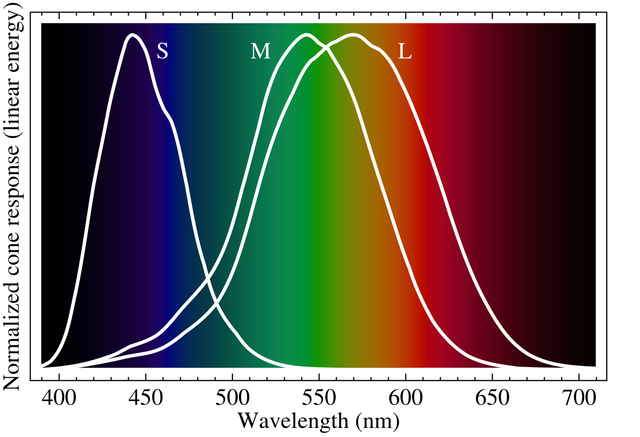 Source: Wikipedia
But when we use cameras that are modified to allow light above 700 nanometers and to reject light from our visible spectrum, the colors and textures of the world are revealed in an
Source: Wikipedia
But when we use cameras that are modified to allow light above 700 nanometers and to reject light from our visible spectrum, the colors and textures of the world are revealed in an
entirely new way.
 I made the above image with a 650nm infrared filter, which allows a very small amount of visible light to pass into the camera's sensor, allowing for false-color effects. While this is an interesting technique, for me personally it feels a little gimmicky, so I tend to shoot >700nm and create b&w images that (to me) are more mysterious.
I made the above image with a 650nm infrared filter, which allows a very small amount of visible light to pass into the camera's sensor, allowing for false-color effects. While this is an interesting technique, for me personally it feels a little gimmicky, so I tend to shoot >700nm and create b&w images that (to me) are more mysterious.
I shot the following set of images at the Hawaii Tropical Botanical Garden just north of Hilo on the Big Island. They are monochromatic, but I chose a copper tone which to me brought out the texture of the plants and trees in the way I envisioned.
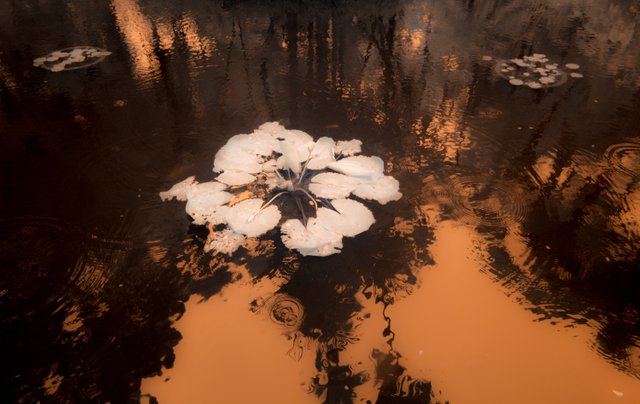
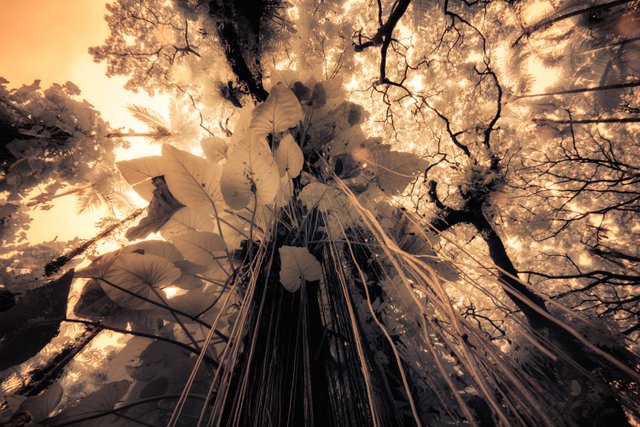
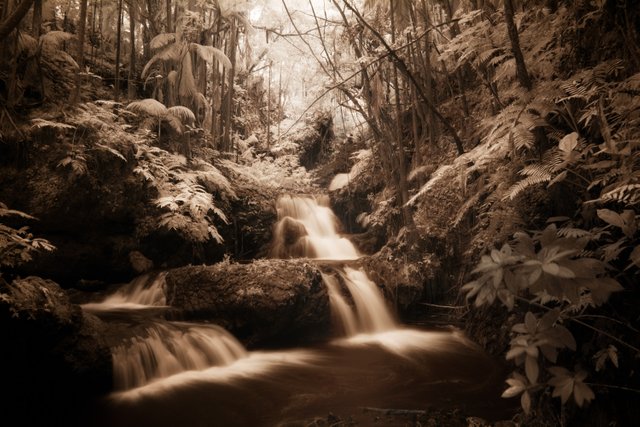
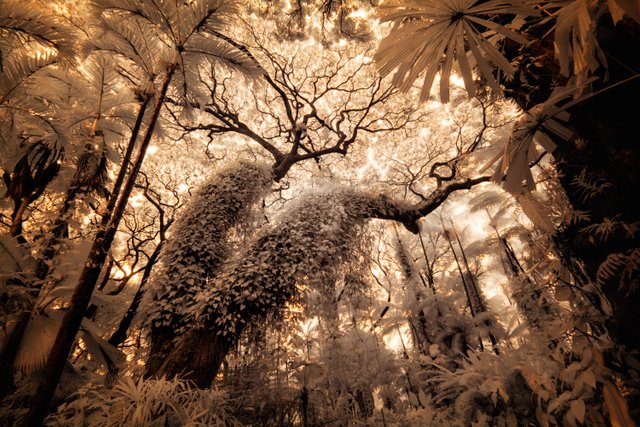
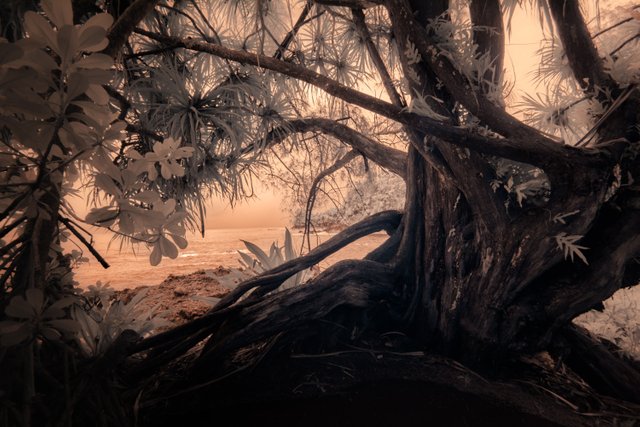
These next two images were captured by me in Fiji, where the Banyan trees are amazing and there are all sorts of interesting volcanic shapes along the shore. The infrared technique here uses white to highlight the intense bright reflections of IR light from the foliage.
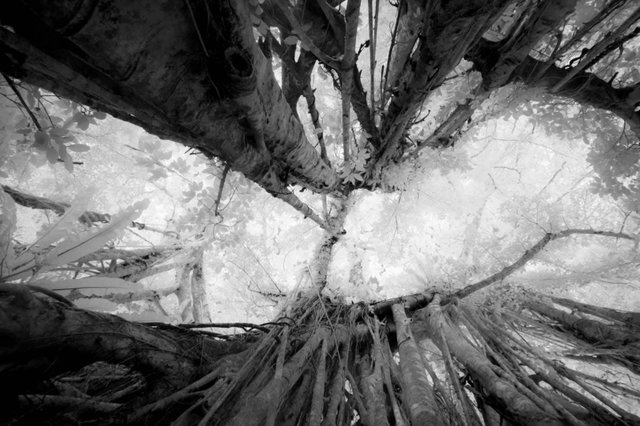

This last set of images (and the one of the fire hydrant at the top of this post) were made at the abandoned 666th Air Force Station that was used for nuclear missile targeting during the Cold War... on top of Mt. Tamalpais in my home town of Mill Valley, California. You can see how IR light brings out a level of detail that's impossible to see within the normal human visible light spectrum.


 Some animals (like snakes) can see infrared light directly with their own eyes. Others (spiders, for example) can see deep into the ultraviolet spectrum. Humans have three types of color receptors (red, green and blue), but some animals, like fish and butterflies, have many more. Mantis shrimp eyes contain 12-16 types of color receptors, allowing them to see an insane amount of colors that we can't even imagine. (Scientists have no idea why this is.) Bees can see colors and details in flowers that allow them to hone in on the pollen.
If you're interested, there are plenty of great resources about it on the internet.
Some animals (like snakes) can see infrared light directly with their own eyes. Others (spiders, for example) can see deep into the ultraviolet spectrum. Humans have three types of color receptors (red, green and blue), but some animals, like fish and butterflies, have many more. Mantis shrimp eyes contain 12-16 types of color receptors, allowing them to see an insane amount of colors that we can't even imagine. (Scientists have no idea why this is.) Bees can see colors and details in flowers that allow them to hone in on the pollen.
If you're interested, there are plenty of great resources about it on the internet.
One great blog post about this is "10 Examples of How Animals See".
Thanks for watching.

I have a long history of inventing tools for animators and also making films and photographs. My wife, daughter and I live at the foot of beautiful Mt. Tamalpais on the San Francisco Bay and I've been using technology to tell complex stories for a long time. My biggest claim to fame? Leading the team that created Autodesk 3ds Max... the most popular 3D animation tool of all time. When I sold the Yost Group to Autodesk at the end of the last century I jumped headfirst into pursing my original love... photography and filmmaking. Now I spend all of my time exploring the mysteries of my world with my cameras, and revealing what I find in my images and films.
You can find my verification post here.













I was thinking about what a bee sees the other day while I was looking at your photos from your "Rainbows in the Garden" post. Fascinating.
Yes! Bee vision is amazing. (I want it.) Here's that shot of what they see from that bog post. It's like they see a target right there leading into the stamen.
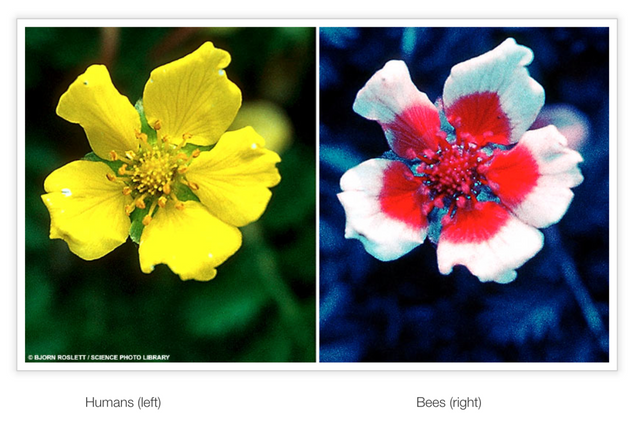
Wow!
Followed you. These are fantastic photos.
Thanks @trending.... (more to come :)